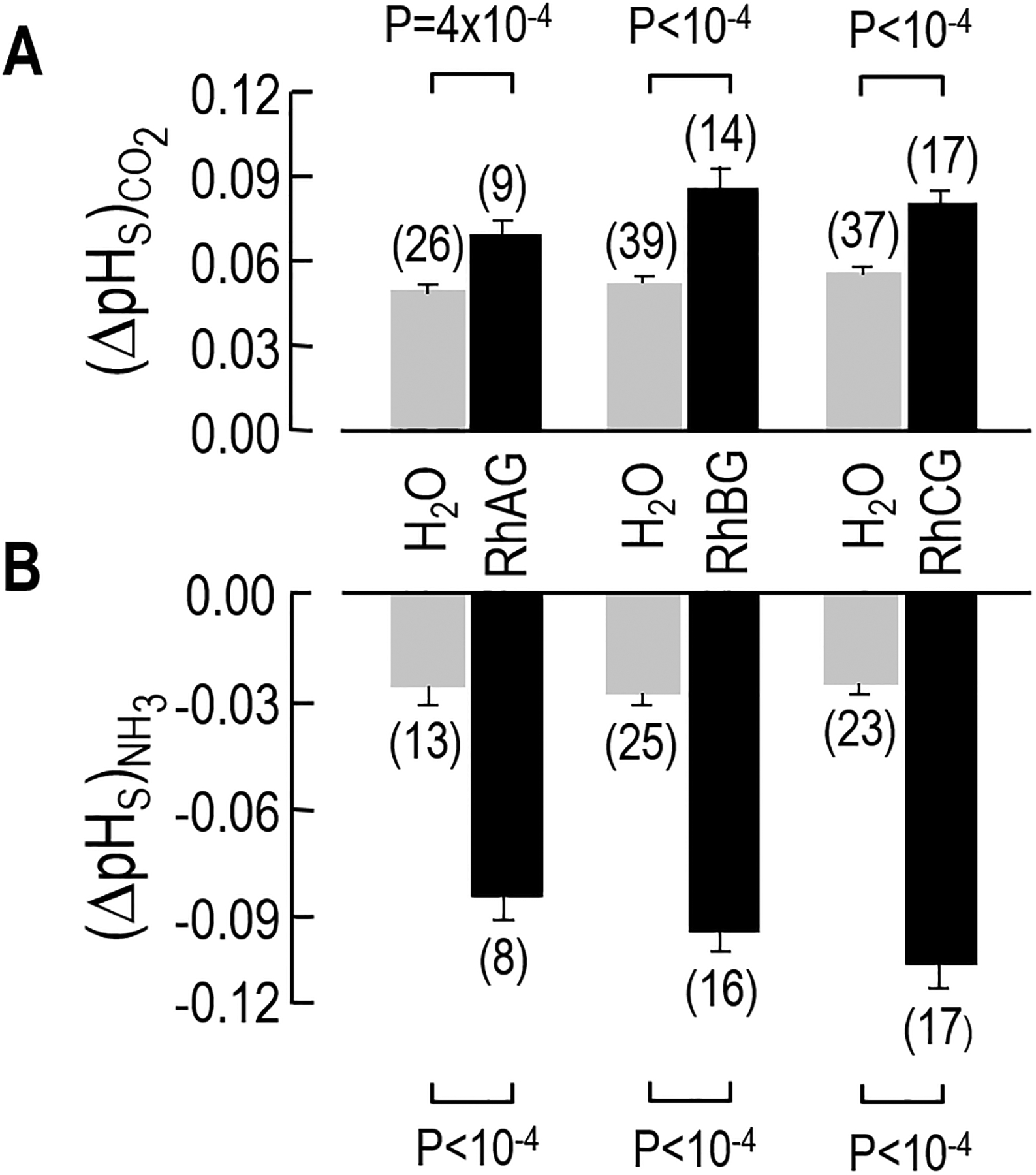Figure 4.

Data summary for the ΔpHS measurements. The bars summarize the results of a larger number of experiments, like those shown in Figure 2. a Maximum pHS excursions evoked by CO2 exposure. Upon exposure to a flowing solution of 5% CO2/33 mM HCO3–, H2O-injected control oocytes become more alkaline. However, in the oocytes expressing RhAG, RhBG, or RhCG, the alkalinization—as shown by a larger (ΔpHS)CO2 value—is greater than that of H2O injected oocytes. b Maximum pHS excursions evoked by NH3 exposure. When the same oocyte is exposed to 0.5 mM NH3/NH4+, the magnitude of the acidification (ΔpHS)NH3 in the RhAG-, RhBG-, or RhCG-expressing oocytes is also greater than in H2O-injected control oocytes. For RhBGD178N and the RhCGD177N the (ΔpHS)CO2 and (ΔpHS)NH3 values (not shown) are not statistically different from the H2O injected controls. We performed Student’s t-test (two tails) for statistical comparisons.
